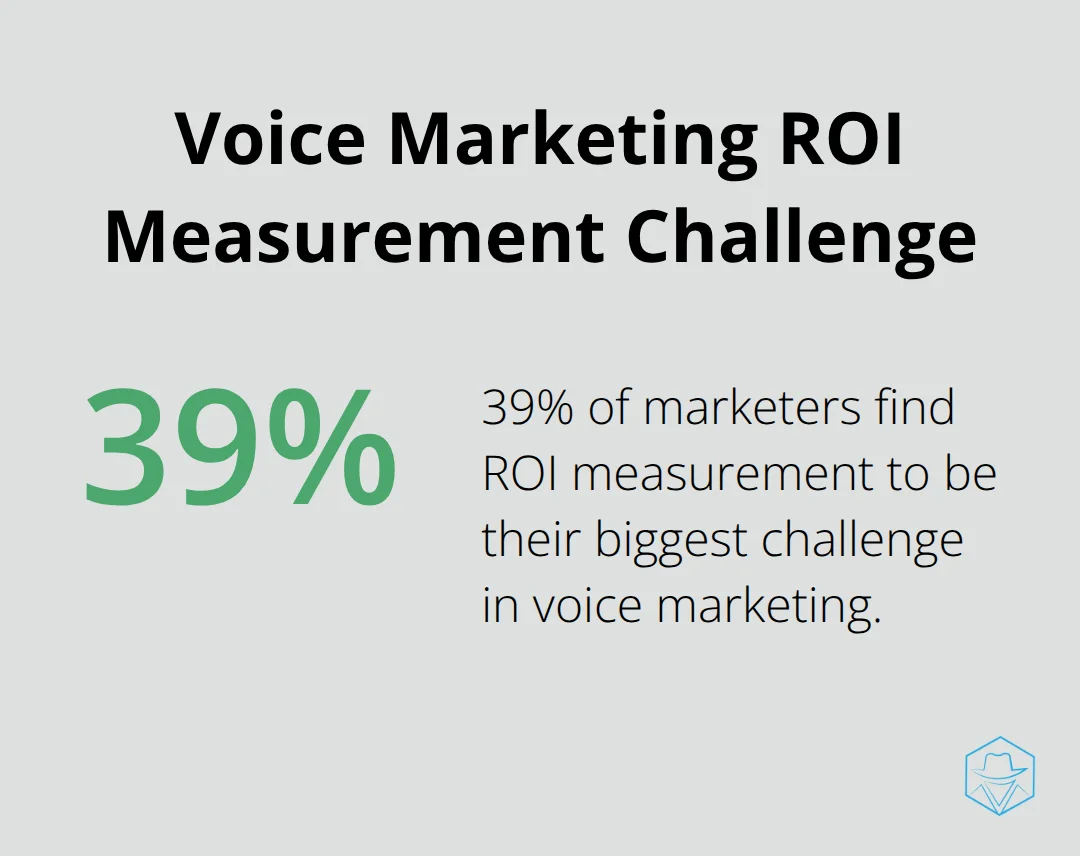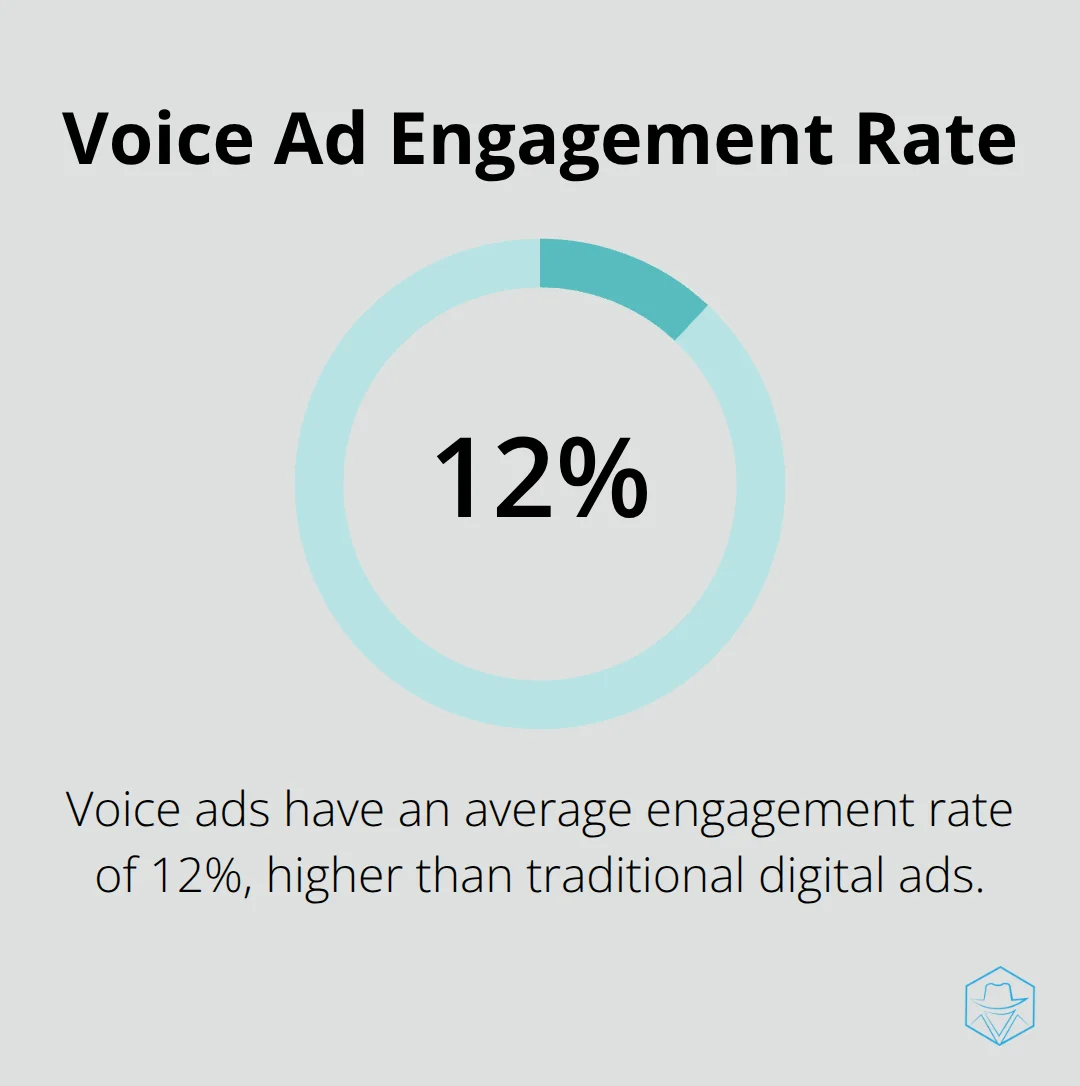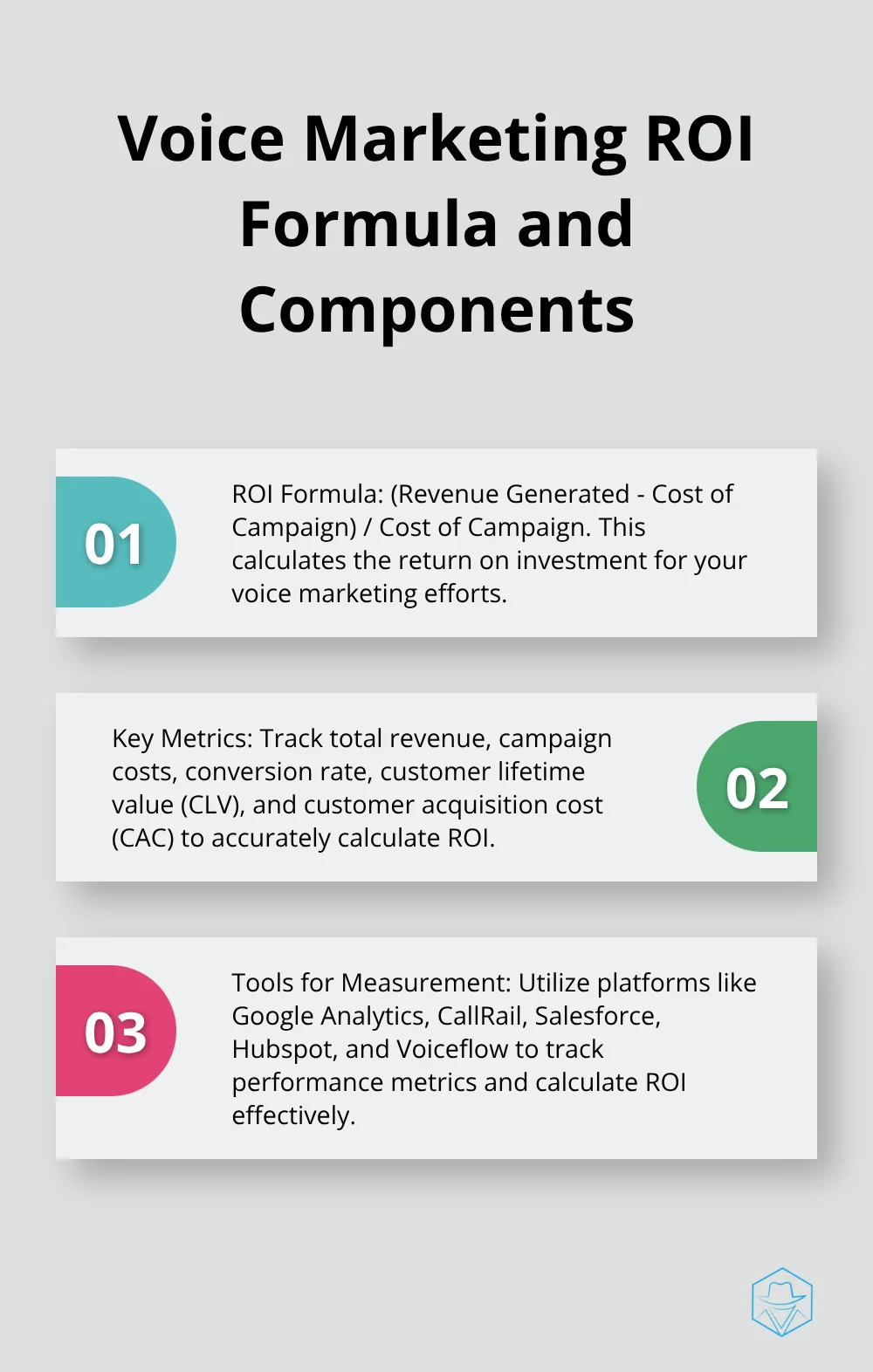Calculating the True ROI of Voice Marketing Campaigns [Guide]
![Calculating the True ROI of Voice Marketing Campaigns [Guide]](/blog/wp-content/uploads/emplibot/voice-marketing-roi-hero-1757041629.webp)
Voice marketing ROI is a critical metric for businesses leveraging audio-based strategies. At Drop Cowboy, we understand the importance of measuring the effectiveness of these campaigns.
This guide will walk you through the process of calculating the true return on investment for your voice marketing efforts. We’ll explore key factors, provide step-by-step instructions, and share real-world examples to help you optimize your campaigns.
What is Voice Marketing ROI?
The Essence of Voice Marketing
Voice marketing has transformed business-customer interactions. This strategy employs audio-based techniques to reach and engage audiences. Voice marketing encompasses various methods, including podcasts, voice assistants, and ringless voicemail campaigns.
Defining Voice Marketing ROI
Return on Investment (ROI) in voice marketing quantifies the effectiveness of audio-based campaigns. It measures the value generated for every dollar invested in voice marketing initiatives. This metric proves indispensable for justifying marketing budgets and demonstrating the worth of voice strategies.
The Significance of ROI Measurement
Tracking ROI in voice campaigns is essential. It enables the identification of successful strategies and those that need improvement, facilitating data-driven decision-making. A recent Voicebot.ai study revealed that 39% of marketers consider ROI measurement their biggest challenge in voice marketing. This statistic highlights the need for a robust ROI measurement strategy.

Key Performance Indicators for Voice Marketing
To calculate ROI accurately, specific metrics require tracking. We recommend focusing on these key performance indicators (KPIs):
- Engagement Rate: This measures audience interaction with voice content (e.g., the number of listeners to a ringless voicemail message).
- Conversion Rate: The percentage of listeners who complete a desired action (such as making a purchase or newsletter sign-up).
- Customer Acquisition Cost (CAC): The expense of acquiring each new customer through voice marketing.
- Customer Lifetime Value (CLV): The total expected revenue from a customer throughout the entire relationship.
- Return Call Rate: Particularly relevant for ringless voicemail campaigns, this metric indicates how many recipients called back after receiving a message.
Technology’s Role in ROI Measurement
Advanced platforms offer built-in analytics tools that simplify metric tracking. Real-time data on campaign performance allows for quick adjustments and ROI optimization.
The path to maximizing voice marketing ROI involves continuous measurement and strategy refinement. Close monitoring of these metrics (and subsequent strategy adjustments) will lead to more effective and profitable marketing campaigns.
As we move forward, let’s explore the factors that significantly impact voice marketing ROI and how to leverage them for optimal results.
What Drives Voice Marketing ROI?
Reach and Engagement: The Foundation of Success
Voice marketing ROI depends on several key factors that can make or break your campaigns. The effectiveness of your voice marketing campaign hinges on its reach and engagement rates. A study by Voicebot.ai found that voice ads have an average engagement rate of 12% (significantly higher than traditional digital ads). To maximize reach, you should leverage multiple channels such as podcasts, voice assistants, and ringless voicemail. Each platform offers unique advantages, allowing you to capture diverse audience segments.

Conversion Rates: Turning Listeners into Customers
Conversion rates directly impact your ROI by determining how many listeners take desired actions. The average conversion rate for voice marketing campaigns is around 4%, according to a report by Adobe. To boost conversions, you should craft compelling calls-to-action and ensure seamless user experiences. For instance, if you use voice assistants, make the purchasing process straightforward and user-friendly.
Customer Acquisition Costs: Balancing Spend and Returns
Customer Acquisition Cost (CAC) plays a vital role in determining overall ROI. The voice marketing industry average CAC is approximately $75, but this can vary widely depending on your target audience and campaign complexity. To optimize CAC, you should A/B test different voice marketing strategies and continuously refine your targeting parameters.
Lifetime Value: The Long-Term Perspective
Customer Lifetime Value (CLV) is often overlooked but is essential for calculating true ROI. Voice marketing can significantly impact CLV by fostering stronger customer relationships through personalized interactions. A study by Deloitte found that companies focusing on CLV are 60% more likely to outperform competitors. You should implement strategies to increase CLV (such as personalized follow-ups and loyalty programs) to maximize the long-term impact of your voice marketing efforts.
Technology Costs: Investing Wisely
The technology powering your voice marketing campaigns can significantly affect ROI. While initial implementation costs may seem high, advanced platforms often lead to better performance and higher returns. For example, AI-powered voice synthesis can boost engagement rates by up to 30% compared to generic voice messages. When you evaluate technology costs, consider long-term benefits and potential ROI improvements rather than just upfront expenses.
Understanding and optimizing these key factors will significantly enhance the ROI of your voice marketing campaigns. Successful voice marketing requires ongoing measurement, analysis, and refinement. In the next section, we will explore the specifics of calculating voice marketing ROI to help you measure and improve your campaigns’ performance.
How to Calculate Voice Marketing ROI
The ROI Formula for Voice Marketing
To calculate voice marketing ROI, use this formula:
ROI = (Revenue Generated – Cost of Campaign) / Cost of Campaign
For example, if your voice marketing campaign generated $50,000 in revenue and cost $10,000 to implement, your ROI would be:
($50,000 – $10,000) / $10,000 = 4 or 400%
This means for every dollar invested, you earned four dollars in return.

Tracking Key Metrics
To accurately calculate ROI, you need to track several key metrics:
- Total Revenue: Track all sales directly attributed to your voice marketing campaign.
- Campaign Costs: Include expenses such as technology fees, content creation, and any additional resources used.
- Conversion Rate: Monitor the percentage of listeners who take the desired action.
- Customer Lifetime Value (CLV): Calculate the total value a customer brings over their entire relationship with your business.
- Customer Acquisition Cost (CAC): Determine how much it costs to acquire each new customer through voice marketing.
Tools for Measuring Voice Marketing Performance
Several tools can help you track these metrics and calculate ROI:
- Google Analytics: Use UTM parameters to track traffic and conversions from voice marketing campaigns.
- CallRail: This call tracking software helps attribute phone calls to specific marketing efforts.
- Salesforce: CRM systems like Salesforce can track customer interactions and lifetime value.
- Hubspot: This marketing automation platform offers robust analytics for tracking campaign performance.
- Voiceflow: For voice app campaigns, Voiceflow provides analytics on user engagement and retention.
Real-World Success Stories
Let’s look at some real-world examples of successful voice marketing campaigns:
- Domino’s Pizza: Their voice-activated ordering system through Google Home increased sales by 6% in the first quarter after launch. The ROI was estimated at 300% after accounting for development costs.
- Purina: Their “Ask Purina” Alexa skill provided pet care advice, resulting in a 30% increase in brand recall and a 15% boost in sales for featured products.
- Johnnie Walker: Their voice-activated whisky tasting experience on Amazon Alexa led to a 20% increase in brand engagement and a 5% uplift in sales.
These case studies demonstrate the potential for significant ROI in voice marketing when executed effectively.
Optimizing Your Voice Marketing ROI
To maximize your voice marketing ROI, consider these strategies:
- Segment your audience: Target specific demographics or behaviors for more personalized campaigns.
- Test different voice styles: Experiment with various tones and personalities to find what resonates best with your audience.
- Integrate with other channels: Combine voice marketing with email, social media, or SMS for a multi-channel approach (Drop Cowboy offers seamless SMS integration).
- Analyze and adjust: Regularly review your metrics and make data-driven decisions to improve performance.
- Leverage AI technology: Use advanced tools like voice synthesis (such as Mimic AI™) to create more engaging and personalized messages.
Final Thoughts
Voice marketing ROI calculation empowers businesses to maximize their marketing efforts. We track key metrics such as engagement rates, conversion rates, and customer lifetime value to gain valuable insights into campaign effectiveness. The ROI formula provides a clear picture of investment returns, enabling data-driven decisions and efficient resource allocation.
We improve voice marketing ROI in future campaigns through audience segmentation, experimentation with different voice styles, and integration with other channels. Regular analysis of performance metrics and data-based adjustments help refine strategies and achieve better results over time. Voice marketing ROI requires continuous measurement and optimization to stay ahead of the competition and drive better business outcomes.
At Drop Cowboy, we offer advanced features like Mimic AI™ for personalized voice messages and Smart Delivery™ for efficient global message delivery. Our user-friendly dashboard and comprehensive analytics make it easy to track campaign performance and boost your ROI. We invite you to explore our platform and unlock the full potential of voice marketing for your business growth.
blog-dropcowboy-com
Related posts

May 6, 2025
HubSpot vs Hootsuite: Social Media Tool Comparison
Compare HubSpot vs Hootsuite in this guide. Explore features, pricing, and ease of use to find the best social media tool for your business.

September 3, 2025
How to Customize AI Voices for Different Marketing Personas
Customize AI voices for marketing personas. Boost engagement with personalized voice strategies. Learn AI voice customization for targeted outreach.

March 30, 2025
HubSpot vs Salesforce: Which CRM Is Right for You?
Compare HubSpot vs Salesforce to find the best CRM for your business. Explore features, pricing, and user experiences in this comprehensive guide.

May 27, 2025
Boost Your Lead Follow-Ups in Wholesale Real Estate with Drop Cowboy
Boost lead follow-ups in wholesale real estate with Drop Cowboy. Improve response rates and close more deals efficiently with our innovative tools.

August 28, 2025
Why Automated Voicemail Campaigns Are a Game-Changer for Sales
Boost sales by engaging clients through automated voicemail campaigns. Enhance reach, save time, and improve customer engagement effortlessly.

September 3, 2025
How to Create an Effective SMS Automation Workflow
Streamline communication and boost efficiency by creating an effective SMS automation workflow with step-by-step guidance and practical tips.